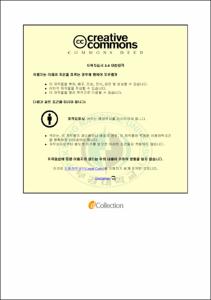이형기 시에 나타난 이미지 연구
- Alternative Title
- A Study on the Images of the Poetry of Lee, Hyung- Gi
- Abstract
- A Study on the Images of the Poetry of Lee, Hyung-Gi
Bae Ok-Ju
Department of Korean Language and Literature,
Graduate School, Pukyong national university
Abstract
This paper aims to investigate the characteristics and meanings of Lee Hyung-ki’s poetry by studying three kinds of images in his works. The experimental images can show that he denies to follow the complacency in poetics and creates new images through defying the original viewpoint of the world with his subversive one. He continuously pursued dynamic images to reform his poem world. One of the most important issues to him in poetry was the images that construct poems; as a result, the images he used changed experimentally throughout his time from early ones to latter ones. Thus, the study on his images will be a key theme when investigating the characteristics of his poems.
There are three types of images in his works. First, his early poems are based on his lyricism but they are different from existing one in that he shows sensory images with contemplative view. The disintegration of lyrical aesthetics occurs through the conflict between traditional lyricism and intellectual lyricism. Second, he overcomes the uniformity of lyrical aesthetics and realism. He contributes to symbolic formation of grotesque, decadent, and evil images with his outstanding experimental spirit. Third, his shocking imagination not only confirms his haecceity but also brings paradoxical images to life that drastically changes aesthetic consciousness. The paradoxical images in his poems have the same way with modernism in emptiness(Sunyata) of birth-and-death and poetics of Ouroboros.
In theoretical speculation of poetic images which helps to see the essence and types of images, most researchers of South Korea has accepted the study of Preminger. According to him, the images are classified to those three categories: mental image, which is mental/psychological and aims only sensory experiences, figurative image, which aims to deliver ideas, and symbolic image, which is generated by repeating images. In order to study the types of images in Lee’s poems, suitable works were chosen and analysed. The images in his work are revealed in three types: sensory image, devilish image, and paradoxical image.
The images in Lee’s poems interpret traditional lyricism in modern way, let readers experience astounding transcendentalization, and lead the flexible expansion of poetic rhetorics. The mental images which reveals his contemplative viewpoint are used in 『Silent and Lonely Land』 and 『The Poet of Stone Pillow』 and shows the diversification of sense, transcendentaliz
ation, sensory change, directivity, and contradistinctive consideration on traditional lyricism.
Devilish images in 『A Dreaming Draught Ghost』 shows the intensification of disharmony between human and the world through Baudelaire’s aristocratism. The images by identification of lyricism destruct the existing world through self destruction and are shown in grotesque language, shivering feeling, mistreatment on existence, and pain of otherness.
Finally, paradoxical images which are used generally throughout his works, especially from 『A Dreaming Draught Ghost』 to his last book 『Cliff』, are generated through the ironical collision between figurative images and their subjects, based on closeness and similarity. Paradoxical images by emotional unreasonableness are shown by existential realization, allegory, the limit of tragedy, and thrill by irony and treachery.
This paper looked into the images in Lee’s poems in general and investigated the characteristics of them. Also it found that the images have changed in experimental flexibility. Therefore, this study is expected to form a base to a more systematic progress in the field of studying images, which has been mentioned partially in several poem books.
The result of investigation on Lee’s experimental images and their deep meanings points toward the characteristics of his poems which aims to change rather than be congested. He showed a strong poetics by expanding the quality of dynamic expression of experimental images. Until now, studies on his works has been incomplete for his independent working area and universal viewpoint, and has been fragmentary, being mentioned partially. Thus, comprehensive investigation has been needed. This paper could reveal attributes of his poems not in their theme or idea, spirit, periodical characteristics and changes, which are all external to the poetry, and made a step forward.
- Issued Date
- 2014
- Awarded Date
- 2014. 8
- Type
- Dissertation
- Publisher
- 부경대학교
- Alternative Author(s)
- Bae Ok-Ju
- Affiliation
- 대학원
- Department
- 대학원 국어국문학과
- Advisor
- 남송우
- Table Of Contents
- 목 차
Abstract ⅲ
Ⅰ. 서론 1
1. 연구목적 1
2. 연구사 검토 10
3. 연구대상 및 방법 20
Ⅱ. 시적 이미지의 이론적 고찰 25
Ⅲ. 이형기 시에 나타난 이미지의 특성 44
1. 감각적 이미지 46
1-1. 감각의 다변화와 초월의식 49
1-2. 감각적 변화와 지향성 59
1-3. 전통 정서와의 대비적 고찰 68
2. 악마적 이미지 78
2-1. 그로테스크한 언어와 전율감 83
2-2. 존재에 대한 학대 96
2-3. 타자적 고통 109
3. 역설적 이미지 123
3-1. 실존적 깨달음과 풍유성 125
3-2. 비극의 한계성 138
3-3. 모순과 배반의 창조 149
Ⅳ. 이형기 시에 나타난 이미지의 의의 163
Ⅴ. 결론 168
※. 참고문헌 175
- Degree
- Doctor
- Files in This Item:
-
-
Download
 이형기 시에 나타난 이미지 연구.pdf
기타 데이터 / 17.14 MB / Adobe PDF
이형기 시에 나타난 이미지 연구.pdf
기타 데이터 / 17.14 MB / Adobe PDF
-
Items in Repository are protected by copyright, with all rights reserved, unless otherwise indicated.